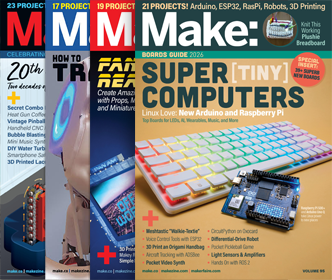
Last week, seven students converged at the Madagascar Institute for that facility’s first class of the new year: “Intro to MIG Welding,” taught by the “connoisseur of terror” himself, Hackett (from TV’s Stuck with Hackett). A true group of student-makers, the class ranged in experience from absolute novices who’d never used power tools before to master carpenters who simply wanted to learn to work with metal.
Hackett (right) introduces the Madagascar Institute, and we each discussed our own skill sets, familiarities with metalworking (if any), and our comfort level with working in a shop. Hackett stressed the importance of safety and being honest with what you do and especially with what you don’t know — and he encouraged students to ask questions when they’re unsure or afraid (after all “fear is never boring”).
Hackett then gave a quick lecture on the different types of welding: “stick welding,” TIG and MIG, among others — comparing and contrasting the various applications of each. He also explained how burning, welding, and explosions are all forms of oxidation, with welding being a very precise and restrained form (hopefully!). We also went over all the basic equipment, like gloves, goggles, and the icon of welding: the helmet (and especially the benefits and drawbacks of auto-darkening filter (ADF) helmets, which use a solar panel (or other electronic component) to recognize UV light and “switch” to dark mode, allowing the viewer near-total vision the rest of the time they’re working).
Each student then proceed to metal-chop two 5″ pieces of hallowed square bar, which we ground down the edges of and would later weld back into “one piece” of metal:
Before actually welding our bars back together, we each learned to weld on a scrap piece of metal, getting our technique, breathing, and positioning down. Each student of course had their own natural method, and Hackett encouraged students to do what worked for them. Some preferred to “pull” the weld, while others preferred to “push;” likewise, some wanted an arm on the table for leverage, while others did not.
After learning the basics, we each took turns tack-welding our two bars together, and then doing full welds all the way around the seams. We had about an hour to watch and learn from each other. Some students accidentally burned holes through their welds, and we even learned to try and re-form those mistakes.
Afterwards, we all examined each others welds, and Hackett pried apart one weld with the assistance of a giant table vice to show a good and bad weld, and to explain how the weld should always be stronger than the material it is joining!
A great primer class with extremely addictive properties, I’ve found myself numerous times since the class wanting to improve the world around me… with welding! While there is a bunch of science to this art, MIG welding is considered the “hot glue of welding” techniques, so its rewards are very immediate, and as mentioned before, can be picked up in a jiffy by makers of all skill levels.
ADVERTISEMENT






